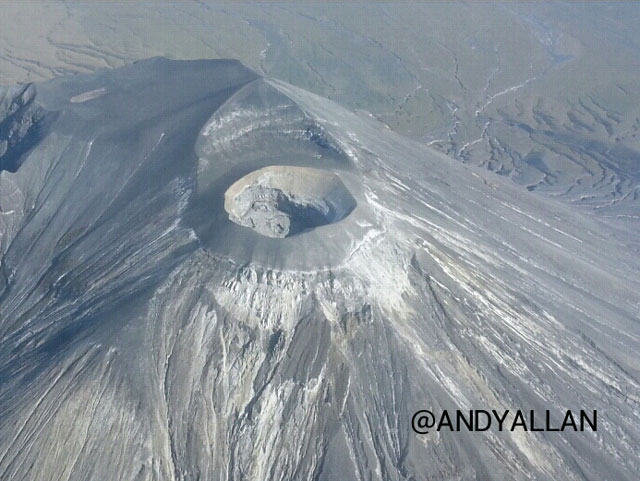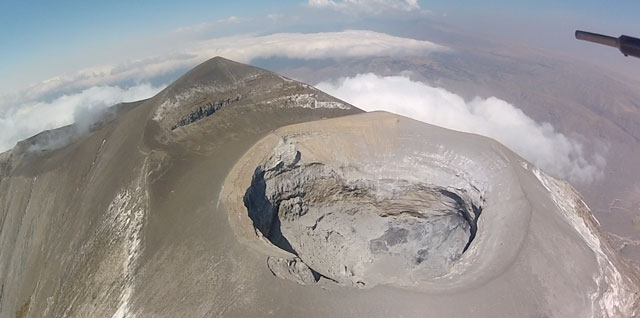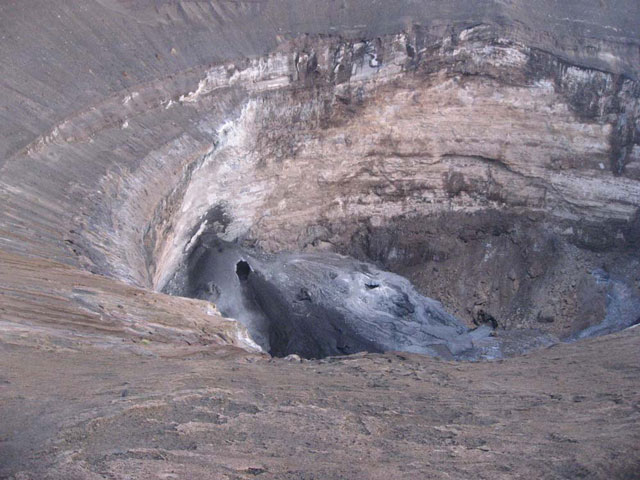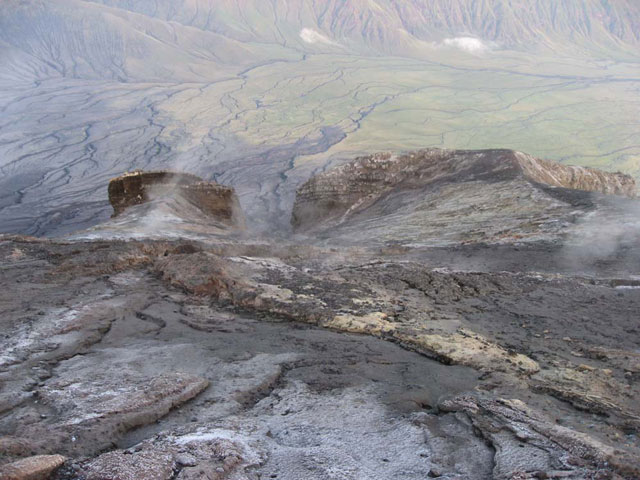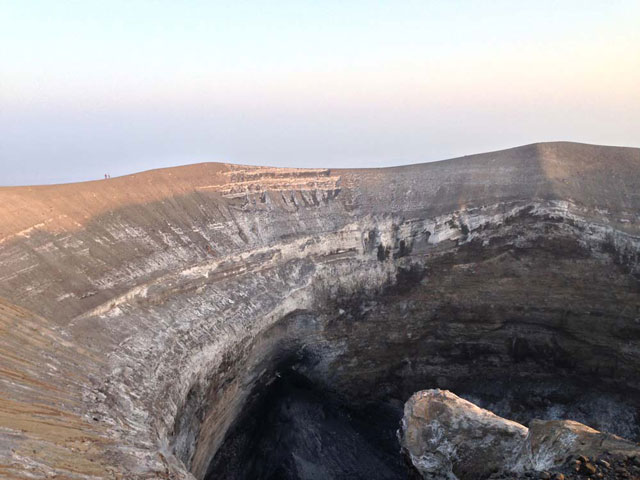Report on Ol Doinyo Lengai (Tanzania) — June 2013
Bulletin of the Global Volcanism Network, vol. 38, no. 6 (June 2013)
Managing Editor: Richard Wunderman.
Ol Doinyo Lengai (Tanzania) Still active in 2012-2013; J.B. Dawson obituary
Please cite this report as:
Global Volcanism Program, 2013. Report on Ol Doinyo Lengai (Tanzania) (Wunderman, R., ed.). Bulletin of the Global Volcanism Network, 38:6. Smithsonian Institution. https://doi.org/10.5479/si.GVP.BGVN201306-222120
Ol Doinyo Lengai
Tanzania
2.764°S, 35.914°E; summit elev. 2962 m
All times are local (unless otherwise noted)
We recently noted that Frederick Belton's web site on Ol Doinyo Lengai has been supplemented by a web site from the Ngare Sero Village Council entitled "Oldoinyo Lengai - The Mountain of God." This new web site has information on climbing, mountain safety, guides, equipment, and fees, as well as activity of the volcano as observed by guides and visitors. According to Belton, Lazaro Saitoti is maintaining the web site from both Arusha and Engare Sero, and it represents a potentially useful source of local information, with an emphasis on tourism.
Abigail Church forwarded to us two aerial photographs of Lengai's active crater and summit, one taken in June 2013 (figure 166) and the other in 28 July 2013 (figure 167). On 29 July, Church reported that she had flown over Lengai a few times in the last year or so, and that Lengai appeared to have small active vents still emitting lava. In addition, these aerial views recorded little other activity except for slippage off the steep walls. She noted that she was in touch with a number of pilots that are often flying over Lengai and that might contact her if they see anything unusual.
On 10 April 2013, Bonnie Betts climbed Lengai and, on Belton's web site is quoted as reporting: "We started at midnight in a thunderstorm with light rain, but it cleared up. You could hear the lava sloshing around inside the crater before getting to the top; also dark smoke could be seen coming from the crater while ascending in the night . . . Looking into the crater, you can see the lava sloshing back and forth in the dark, black tunnel, and then some would flow out with a different flowing swishing sound." Local guides expressed concerns to Betts that an extensive crack seen in the crater may be the beginning of a collapse of the inner wall of the pit crater. Figures 168 and 169 show photos taken during Betts' climb.
Belton received some photos and a description by Gian Schachenmann of a visit to Lengai on 17-18 June 2013. Schachenmann noted sloshing lava sounds from the spatter cone and big cracks on the rim where gases escaped (figure 170).
Death of John Barry Dawson, Lengai Legend. According to the Mitchell (2013), John B. Dawson, Emeritus Professor of Geology, Lakehead University, Thunder Bay, Ontario, Canada, died 2 February 2013. Excerpts from that obituary are found below.
Dawson was known for his extensive knowledge of kimberlite geology. Subsequent to graduation in 1960, Barry joined the Tanganyika Geological Survey, where he was employed to map areas of the then remote Angata Salei region near Lake Natron, a location of an active volcano. "The first ever descent into the crater of this volcano, Oldoinyo Lengai, (the Maasi Mountain of God), was made by Barry and Ray Pickering in October 1960. It was during this visit that he recognized the unique sodium carbonate volcanism and earned himself a permanent place in petrological history with the publication of his paper on these extraordinary rocks in the journal Nature (Dawson, 1962). Subsequently, he maintained an active research program on the petrology of Oldoinyo Lengai and other volcanoes in the Gregory Rift Valley."
"During this work he narrowly survived one violent silicate ash eruption of Oldoinyo Lengai in 1966, and was fortunate enough to observe, some 40 years later in 2007, the return to silicate pyroclastic activity from the quiet effusive natrocarbonatite eruptions. To the time of his death, Barry was actively involved in studies of Oldoinyo Lengai, Kerimasi, Mosonik and other Tanzanian volcanoes. He was especially pleased with the publication in 2009 [sic] of his comprehensive review of volcanic activity in the Gregory Rift" (Dawson, 2008).
References. Belton, F., 2013, Ol Doinyo Lengai, web site, URL: http://www.oldoinyolengai.pbworks.com.
Dawson, J.B., 1962. Sodium Carbonate Lavas from Oldoinyo Lengai, Tanganyika, Nature, v. 195, pp. 1075-1076.
Dawson, J.B., 2008, The Gregory Rift Valley and Neogene-Recent Volcanoes of Northern Tanzania, Geological Society, London, Memoir 33, pp. viii 102.
Mitchell, R.H., 2013, John Barry Dawson 1932-2013, Mineralogical Magazine, v. 77, no. 3, pp. 401-402.
Ngare Sero Village Council, 2013, Oldoinyo Lengai - The Mountain of God, web site, URL: http://www.oldoinyo-lengai.org
Geological Summary. The symmetrical Ol Doinyo Lengai is the only volcano known to have erupted carbonatite tephras and lavas in historical time. The prominent stratovolcano, known to the Maasai as "The Mountain of God," rises abruptly above the broad plain south of Lake Natron in the Gregory Rift Valley. The cone-building stage ended about 15,000 years ago and was followed by periodic ejection of natrocarbonatitic and nephelinite tephra during the Holocene. Historical eruptions have consisted of smaller tephra ejections and emission of numerous natrocarbonatitic lava flows on the floor of the summit crater and occasionally down the upper flanks. The depth and morphology of the northern crater have changed dramatically during the course of historical eruptions, ranging from steep crater walls about 200 m deep in the mid-20th century to shallow platforms mostly filling the crater. Long-term lava effusion in the summit crater beginning in 1983 had by the turn of the century mostly filled the northern crater; by late 1998 lava had begun overflowing the crater rim.
Information Contacts: Abigail Church, The Ker and Downey Safari Tradition, James Robertson, chairman, P.O. Box 86, Karen 00502, Kenya (URL: http://www.kerdowneysafaris.com/); Frederick A. Belton, University Studies Department, Middle Tennessee State University, Murfreesboro, TN (URL: http://www.oldoinyolengai.pbworks.com); Lazaro Saitoti, Chairman, Ngare Sero Village Council, and Lemra Kingi, Chairman Tourism, Ngare Sero Village Council, Arusha and Engare Sero, Tanzania (URL: http://www.oldoinyo-lengai.org); and Bonnie Betts (no contact information).


